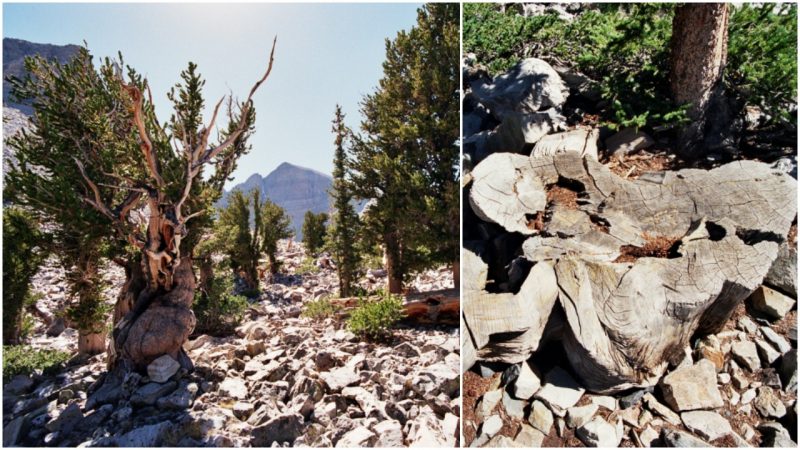A human rarely lives to celebrate their 100th birthday. The tortoises of Galapagos can live up to 170 years. But no man nor animal can compare with a tree which has seen millennia come and go, withstanding climate change and the development of human civilization.
The Bristlecone pine is regarded as the longest-lived lifeform on Earth, as it was determined in 2012 that one specimen is over 5000 years old. In order to survive for such a long time, the ancient tree holds a couple of tricks up its leaves.
First of all, Bristlecone pines grow in high-altitude areas and form various twisting shapes in search of sunlight.
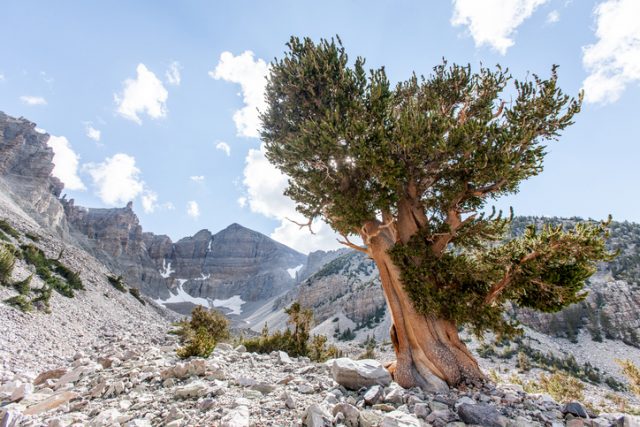
Their second trait which makes them almost immortal is something called “sectored architecture” meaning that its root feeds only the part directly above them, thus partitioning the tree into as many sectors as there are roots.
This enables it to survive even if one of the roots stops functioning, as it only affects a small segment of the tree.
These trees can be found in dry regions of the Western United States, growing in subalpine areas ― the remoteness of which helps them survive.
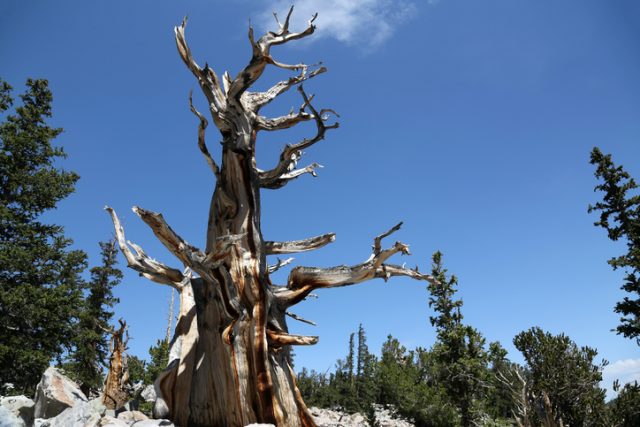
Apart from the 5,000-year-old specimen discovered in 2012, there were two other Bristlecone pines dating to pre-Biblical times. One of them, dubbed Prometheus, had a history estimated to span more than 4,900 years.
It grew in Wheeler Park, long before the continent was mapped by various settlers, in an age when ancient American cultures roamed the prairies.
Related Video: 6 World Famous Landmarks Hiding something from the Public
But in 1964, its life was tragically interrupted after a research effort went wrong. At the time, the United States Forest Service had given a permission to a geographer named Donald R. Currey, to conduct research in determining the exact age of the Bristlecone pines in Wheeler Park, in the White Mountains, California.
Currey, who was a graduate student at the time, was allowed to take core samples from numerous trees, to examine the number of rings within the trunk, as well as looking for traces of climatic change by using the different width patterns of rings to determine good and bad growing seasons.
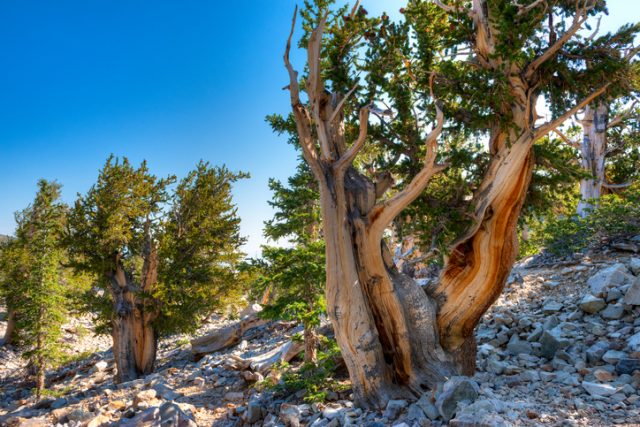
The Bristlecone pines can serve as “climatic vaults,” as they help scientists discover patterns which serve as the basis for further research of how the climate helped shape the landscape over periods of several thousands of years.
When he discovered Prometheus, the 4,000-year-old pine, Currey was struck with awe. Back then this was the oldest known Bristlecone pine ― the one that served as proof that these trees have managed to outlive every major civilization known to man. He counted 4,862 rings, but since its growth varied from season to season, the estimated age was closer to 4,900.
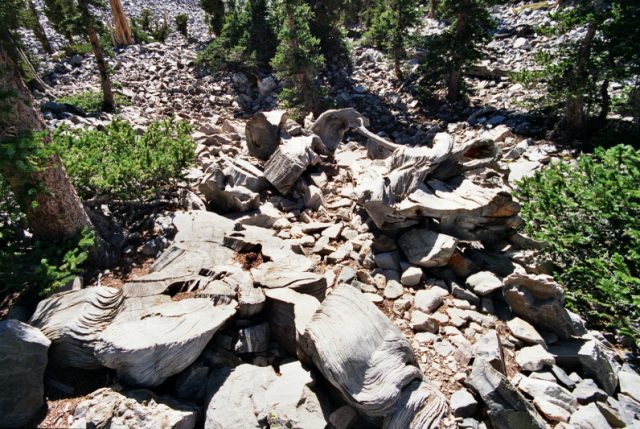
Prometheus was already known among locals who had passed the story of its age from one generation to the next, but no one knew how old exactly it was. Named after a Greek demi-god who — according to the myth — presented the mortals with knowledge of fire, thus becoming the forefather of civilization.
In this case, the Bristlecone pine which bears its name was also a sort of a knowledge bringer, as its examination directly affected the development of carbon dating used every day by archeologists and paleontologists, as well as priceless climate data.
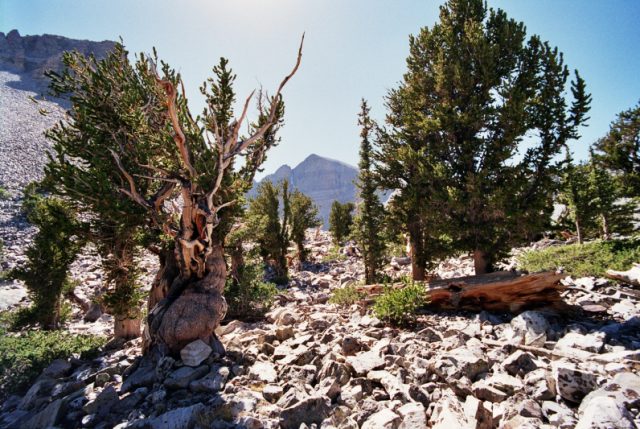
Unfortunately, just like Prometheus the Titan had to be punished by the supreme deity, Zeus, for the secrets he revealed to humanity, Prometheus the tree suffered a terminal blow from the examination in which it unwillingly took part.
It was never determined what exactly caused the death of the 4,900-year-old tree, but several accounts suggest that it must have been somehow related to Currey and his research. The first version of the story claims that one of Currey’s instruments, used while taking samples, broke, leaving a deadly piece of metal inside the tree.
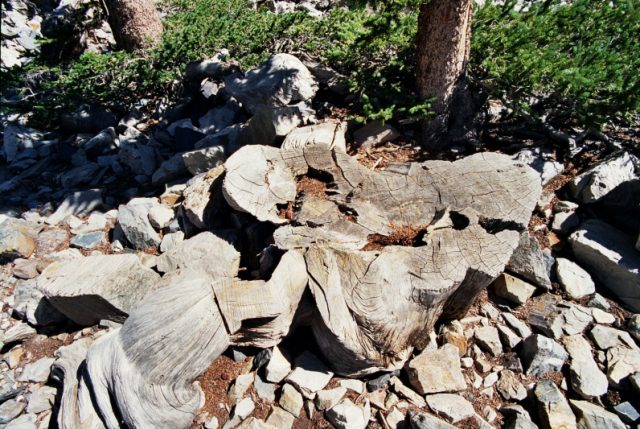
The other account suggests that it was Currey’s lack of experience which caused the death of Prometheus, for he had never handled such a large tree, probing it with an increment borer multiple times to various depths. It has also been suggested that it was, in fact, done on purpose, for the geographer needed a full cross-section to count the rings.
The truth remains unknown to this day. Anyhow, what is left of the once-mighty Prometheus is a stump, exhibited at the Great Basin Visitor Center, California, with all of its 4,862 rings on display.
Nikola Budanovic is a freelance journalist who has worked for various media outlets such as Vice, War History Online, The Vintage News, and Taste of Cinema. He mostly deals with subjects such as military history and history in general, literature and film.
